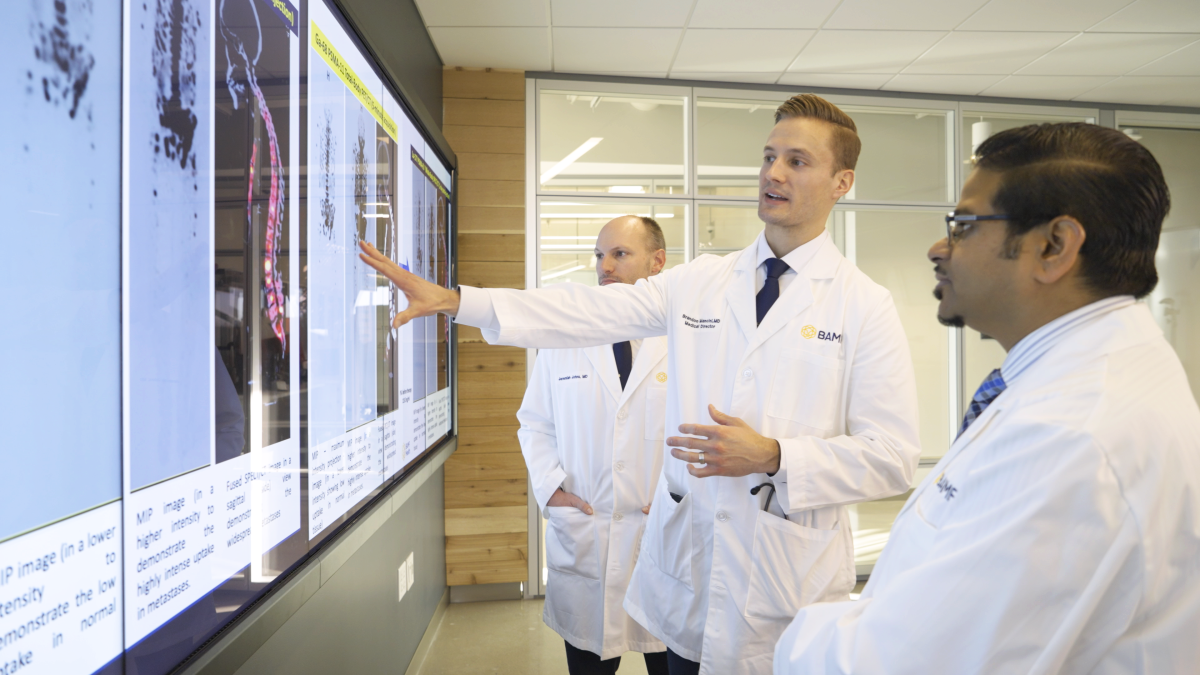The potential for technology in healthcare today is constantly growing – from artificial intelligence (AI)-enabled devices that can help clinicians cut MR scan times by up to 50 percent[i], to streamlining radiation therapy workflows, and reducing administrative burdens – almost every care area is being impacted. Healthcare providers are embracing these advanced solutions to help them identify the critical information they need to make decisions, all with the goal of improving patient care by enabling faster and more precise treatment plans.
However, pain points still remain when it comes to low technological interoperability across some healthcare systems, workforce burnout, fragmented care collaboration, and accessibility to care. While these challenges impact a wide variety of complex modalities like Theranostics, cardiology and neurology, a prime example lies in the roadblocks that exist in the radiation oncology space. Nearly two-thirds of all cancer patients receive radiation therapy (RT), a type of treatment that can either be given alone or in combination with surgery and/or chemotherapy. Yet, it can take weeks for a patient to go from a cancer diagnosis to treatment – a delay that can have significant impacts on patient outcomes when every second counts.
By utilizing solutions that can help access and streamline the information needed in the moment, the journey to personalized care can become faster and more efficient. GE HealthCare is at the forefront of addressing these challenges through its precision care strategy, which aims to make hospitals more efficient, clinicians more effective, therapies more precise, and patients healthier and happier.
Clinicians are looking for innovative and integrated devices and solutions that address the most pressing challenges of delivering care across multiple pathways as efficiently as possible. “That’s why GE HealthCare is committed to developing smart, AI-powered devices that cater to specific disease states, thereby enabling clinicians to deliver more personalized care,” notes Taha Kass-Hout, MD, MS, Chief Technology Officer of GE HealthCare.
Building on its commitment to connecting care, GE HealthCare announced it has entered into an agreement to acquire MIM Software, a leading global provider of medical imaging analysis and AI solutions. GE HealthCare expects to leverage MIM Software’s imaging analytics and digital workflow capabilities across various care areas to accelerate innovation and differentiate its solutions for the benefit of patients and healthcare systems around the world.
MIM Software’s portfolio of innovative imaging solutions provides a variety of beneficial features, including: the integration of diagnostic images from multiple modalities into treatment plans; automation to help reduce repetitive tasks and manual interventions; quantitation and advanced processing in diagnostic imaging and nuclear medicine to help determine therapy response; and a platform to assist with Theranostics imaging and dosimetry.
GE HealthCare expects to integrate MIM Software solutions into its advanced visualization offerings to support the broad practice of precision care across various disease states and imaging practices, including Theranostics in oncology for the treatment of advanced prostate cancer, streamlined workflow solutions in radiation oncology to help simplify complex cancer treatment plans, beta amyloid imaging in neurology for Alzheimer’s patients, and myocardial perfusion to diagnose coronary artery disease (CAD).
“We are committed to providing comprehensive, connected devices and digital solutions that enable providers to improve patient care across multiple specialties,” says Peter Arduini, President & CEO of GE HealthCare. “We expect our efforts to bring these two complementary organizations and innovative product portfolios together to strengthen our capabilities as a leading provider of integrated imaging systems, analytics, and advanced digital workflows across several care areas and pathways – including Theranostics, radiation oncology, urology, neurology and cardiology. Now and in the future, we are working to transform patient care.”
“We are excited by the prospect of joining GE HealthCare and thrilled to share this exciting news,” adds Andrew Nelson, CEO of MIM Software. “Over the past two decades, we have worked to develop innovative vendor agnostic products and deliver quality services to earn the trust of our customers – this will not change. As a part of GE HealthCare, we anticipate developing new and increasingly integrated digital solutions to meet our customers’ most complex and pressing needs, today and into the future. Together, we will build upon our shared legacies of enhancing patient care.”
Forward-Looking Statements
This release contains forward-looking statements. These forward-looking statements might be identified by words, and variations of words, such as “will,” “expect,” “may,” “would,” “could,” “plan,” “believe,” “anticipate,” “intend,” “estimate,” “potential,” “position,” “forecast,” “target,” “guidance,” “outlook,” and similar expressions. These forward-looking statements may include, but are not limited to, statements about the transaction, the completion and expected results of the transaction, and GE HealthCare Technologies Inc.’s (the “Company’s”) performance, growth opportunities, and strategy. These forward-looking statements involve risks and uncertainties, many of which are beyond the control of the Company. Factors that could cause the Company’s actual results to differ materially from those described in its forward-looking statements include, but are not limited to, the conditions to the completion of the transaction may not be satisfied; closing of the transaction may not occur or may be delayed; the Company may be unable to achieve the anticipated benefits of the transaction; operating costs and business disruptions (including, without limitation, difficulties in maintaining relationships with employees, customers, and suppliers) may be greater than expected; the Company may assume unexpected risks and liabilities; and completing the transaction may distract the Company’s management from other important matters. Other factors that may cause such a difference also include those discussed in the "Risk Factors" section of the Company’s Annual Report on Form 10-K filed with the U.S. Securities and Exchange Commission and any updates or amendments it makes in future filings. There may be other factors not presently known to the Company or which it currently considers to be immaterial that could cause the Company’s actual results to differ materially from those projected in any forward-looking statements the Company makes. The Company does not undertake any obligation to update or revise its forward-looking statements except as required by applicable law or regulation.
[i] AIR Recon DL. GE HealthCare data on file.

